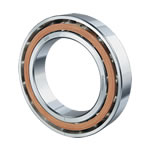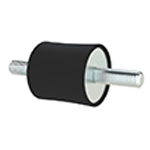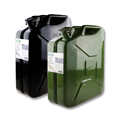Categories
Modern Warehouse
ANSI Duplex Double Cranked Links
Please wait while we load your selection
ANSI Duplex Double Cranked Links
Double cranked links are used to extend chains that have an odd number of pitches and are composed of a flat-sided inner link ready attached to a crank sided link. The component therefore presents inner widths at both ends. They will most likely be secured into your existing chain using cotters or rivets.
A duplex chain differs from the familiar two-sided "simplex chain in having a central run of link plates in addition to the two chain sides threaded on to the same cross pins. In appearance they resemble "double chains. Duplexing increases the chain's load-bearing capacity and stability.
Chains and links have three dimensions to match to the sprockets they run on: width (between inner side plate sections), their pitch from bush pin to bush pin (centre to centre), and the diameter of the rollers if fitted over the bush pins ("roller chains).
ANSI sizes are designated by codes derived from their pitch in multiples of one eighth of an inch. Hence the 4 of a "40 indicates a pitch of ?being four-eighths, and a 165 indicates a 2 being sixteen-eighths. The final digit in each code denotes the type of chain: a zero suffix indicating "standard, a 1 lightweight and a 5 a "bush chain without rollers.
Our personnel are knowledgeable and happy to offer advice about the components you require at any time. We can also source all specialised and non-standard components.
Our ANSI duplex double cranked links are made either by Sedis or Renold. Both have been manufacturing and improving their chains for over a century; Sedis began chain-making in 1895 as part of the Peugeot group, and Renold set up in Salford Manchester in 1879. Renold offer chain links in several strengths and surface treatments, with their "Blue and "Synergy ranges especially recommended. Pre-stressing, heat-treating and precision drilling improve their efficiency, durability and fatigue resistance by 30-60% over lesser-known brands.
When buying replacement links, or extenders like ANSI duplex double cranked links, there is little point in exceeding the quality of an existing chain. Upgrading the entire chain to the Synergy range can bring long-term savings and makes sense if chains are difficult to access and lubricate. Leaving worn chains running damages your sprocket teeth, entailing a more expensive refurbishment in the longer term.
Wear usually manifests as apparent chain "stretch as cross pins bite into side plates. Any stretch is readily apparent by manually wrapping the chain around the sprocket.
Regular lubrication improves the longevity of any chain and makes transmission quieter. However, when oiling is not allowed, such as near food manufacturing, we recommend stainless steel components. Otherwise the ideal lubricant is a light mineral oil. Lubricants like grease, heavy oil and spray-on products can actually accelerate wear and are not recommended unless approved by the manufacturer. Oil drips are ideal when feasible, and some link rollers are notched to allow better penetration.




